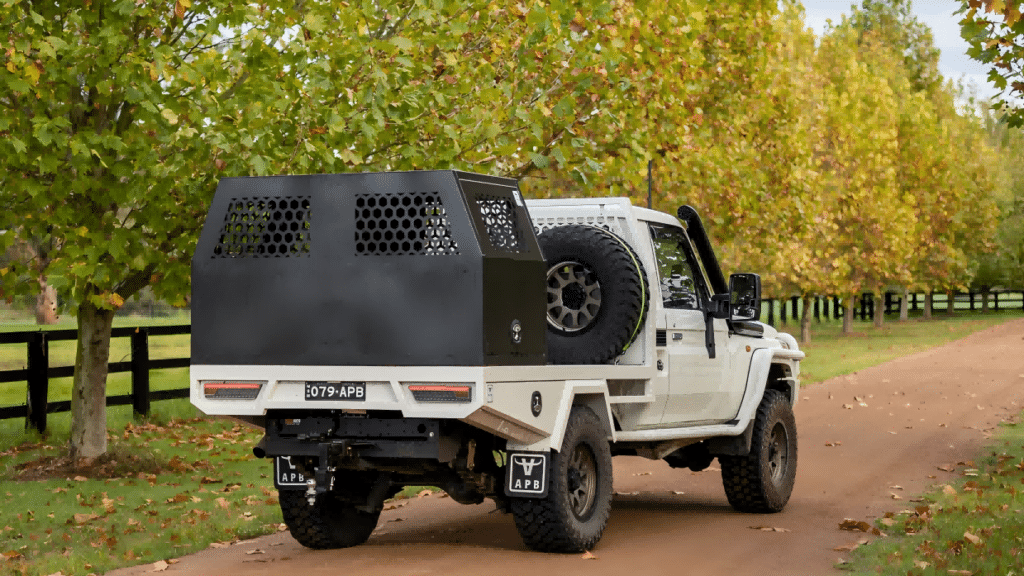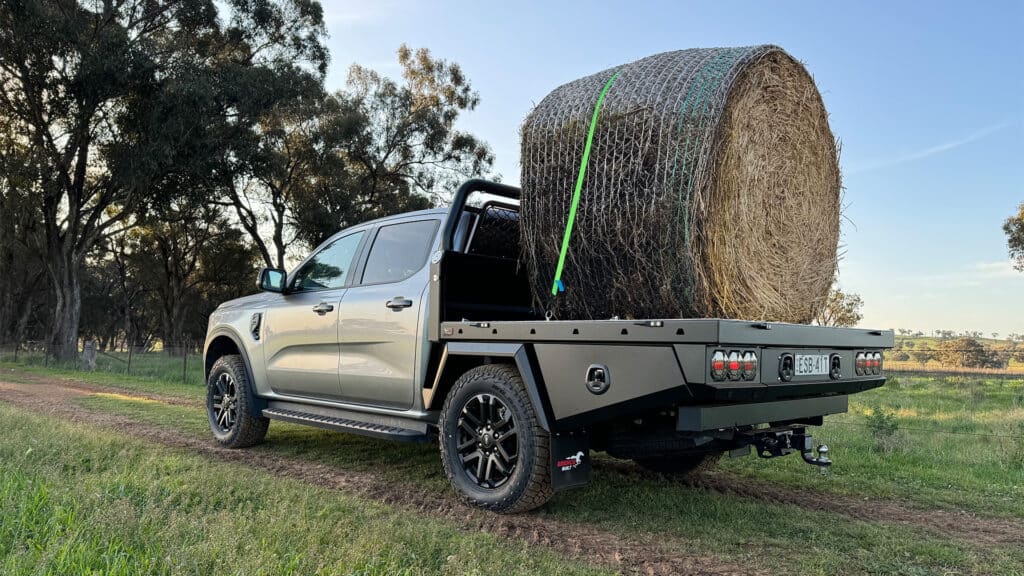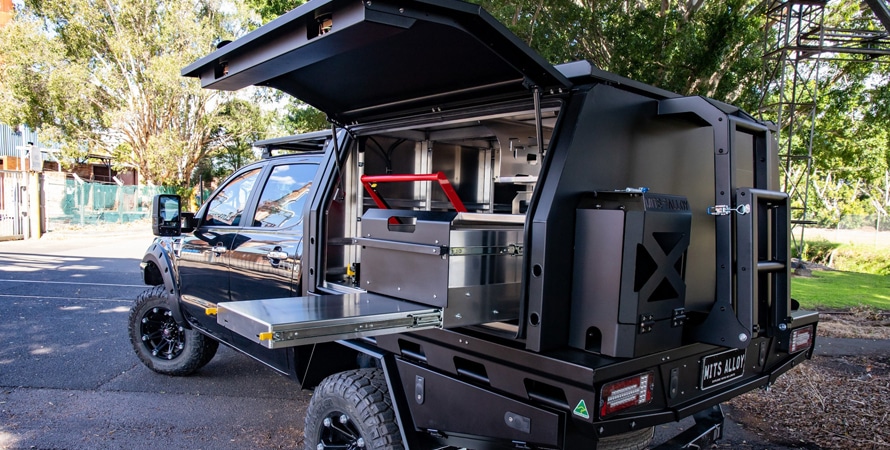In Australia, New Zealand and all around the world, Practical pickup truck have became an indispensable multi-purpose vehicle for construction sites, farm transportation and outdoor adventures. As a key parameter to measure the vehicle’s carrying capacity, ute tray size can directly affects practicality, regulatory compliance and driving safety.
This article will focus on how to choose the appropriate ute tray size from the dimensions of standard size classification, practical scenarios, selection recommendations and customization trends, to help you make scientific decisions when purchasing, modifying or maintaining a pick up.

1. Standard classification of ute tray sizes
There is no global standard for Ute tray sizes, but in Australian market, ute trays come in various sizes depending on the cab type (dual cab, single cab, etc.) and the specific vehicle model. Generally, dual cab trays are shorter and wider, while single cab trays are longer.
| Cab Type | Longitud (milímetros) | Ancho (milímetros) | Popular Model | use |
| Single Cab | 2400–2800 | 1800–1900 | Toyota LandCruiser 79 | Farm, heavy-load transport, large modification space |
| Dual Cab | 1600–1800 | 1770–1820 | Ford Ranger, Hilux | Daily commuting and tool transportation |
| Extra Cab | 1800–2200 | 1800–1850 | Isuzu D-Max Extra Cab | Balance rear space and cargo capacity |
Tip: Australian road regulations usually limit the rear overhang and do not allow the tray length to extend beyond 60% of the wheelbase. Otherwise, the vehicle may not be registered or there may be a risk of fines.
2. How does ute tray size affect practicality and driving experience?
The ute tray size determines what you can carry, how much it can carry and how far it can travel – it is not just about data, but also about work efficiency and safety.
1. Carrying capacity and material type
- Long ute tray (over 2400mm): suitable for transporting long tubes, wooden boards, tool cabinets, etc., often used in construction projects or farm materials.
- Short ute tray (about 1600mm): suitable for daily household or light equipment, convenient parking and operation.
2. Center of gravity and driving stability
The longer the ute tray, the more backward the center of gravity of the cargo, which increases the tail swing and braking distance during driving. This is especially obvious when driving on highways or rugged terrain. Por lo tanto, it is not advisable to add extra-long ute tray to double-row vehicles.
3. Parking and city traffic
When using utes and trays in the city, especially in narrow streets or underground garages, shorter ute tray size is more flexible. Improperly installed long trays may cause difficulties in turning or hit other vehicles.

3. How to choose the appropriate ute tray size according to the purpose?
Different work condition have different requirements for ute tray size. The following suggestions may help you accurately match ute tray size with your needs:
| Condition | Cab | Sizes | Material | Consejos |
| Construction projects | Single | 2400–2700mm | Steel/Aluminium | Can be installed with tool boxes, crane arms. |
| Farm transport | Single/Extra | 2200–2600mm | Alloy | Rust-proof, suitable for livestock and grain transportation |
| City transport | Dual | 1600–1800mm | Alloy | Easy parking and moderate load capacity |
| Outdoor Camping | Dual/Extra | 1700–2000mm | Alloy | Can add water tanks, power supply systems, etc.. |
4. Precautions for customizing ute tray size
1. Compliance review
In Australia, each state has strict regulations on vehicle size. After the ute tray is lengthened, it must meet the following requirements:
- Total length must not exceed 12.5 medidores
- Rear overhang must not exceed 60% of wheelbase
- Taillights and license plates cannot be blocked
It is recommended to consult vehicle engineering certification personnel or registered tray manufacturers before modification.

2. Load-bearing and chassis matching
Increasing the ute tray size will bring additional load. It is necessary to ensure that the vehicle chassis structure, suspension system and braking capacity are sufficient to support it to avoid traffic accidents or mechanical damage caused by overload.
3. Additional function reservation
Customized tray can reserve installation locations (such as tool boxes, ladder racks, water tanks, awnings, etc.). The size and functional layout must be coordinated with the daily workflow to avoid “enough space but not easy to use”.
5. Trends in Ute Tray Sizes: From Oversized to Smart Customization
Now the utility vehicles (Utes) are going to evolve from purely work-oriented machines to versatile lifestyle vehicles, the design and sizing of Ute trays are undergoing a significant transformation.
1. Ute tray Size Demand changes: From Bigger Is Better to Fit-for-Purpose
Traditionally, many users preferred extra-large Ute trays (e.g., 2400mm–2800mm) to maximize load capacity—especially in construction and farming sectors. Sin embargo, recent years have seen a notable shift.
Emerging Trends:
- Urban driving increases: With the rise of dual-cab Utes, people prioritize cabin space and city compatibility, leading to preference for shorter trays (1600–1800mm).
- Stricter regulations: Road rules now strictly limit rear overhang and overall vehicle length, restricting extreme tray extensions.
- Diverse use cases: Utes are used for recreation, cámping, and family travel—not just work. This leads to a demand for balanced sizing.
The trend is shifting toward “practical, well-balanced” tray sizes, designed to work harmoniously with overall vehicle geometry and use-case diversity.
2. Regulatory Compliance Drives Standardization
Government authorities in Australia, Nueva Zelanda, and other markets have tightened compliance requirements, especially around:
- Rear overhang limits: Typically no more than 60% of the wheelbase.
- Total vehicle length: Must comply with light vehicle limits (usually under 12.5m).
- Visibility rules: Tray size must not obstruct tail lights or number plates.

Industry Response:
- Tray manufacturers offer pre-certified tray sizes to reduce legal risk.
- Popular standard trays now include:
- 2400×1800mm (for single cab)
- 1800×1800mm or shorter (for dual cab)
- Growing popularity of ADR-compliant tray packages simplifies roadworthy checks and installations.
3. Material Innovation and Modular Design
With rising fuel costs and performance concerns, tray manufacturers are shifting from steel to lightweight, high-strength materials:
Manufacturing Trends:
- Aluminium trays dominate due to rust resistance and weight savings.
- Introduction of hybrid materials: such as aluminum panels with steel frame reinforcements for heavy-duty use.
- Modular design becomes standard: allowing users to add or remove accessories like toolboxes, jerry can holders, ladder racks, water tanks, etc..
Benefits:
- Easier installation and replacement.
- Universal fitment across multiple Ute platforms.
- Stronger secondary market value due to interchangeability.
4. User Preferences: Utility Meets Lifestyle
As Utes transition into multi-purpose vehicles, tray sizing is driven less by raw capacity and more by practicality across various lifestyles:
| User Type | Use Case | Size Trend |
| Constructores & Agricultores | Tools, raw materials, feed | Longer trays (2200–2500mm) |
| Técnico & SMEs | Mobile tools, light cargo | Medium trays (1800–2000mm) |
| Overlanders & Campers | Storage drawers, fridges, solar panels | Modular trays + 1600–1800mm size |
| Urban Families | City driving + weekend camping | Short trays (1600milímetros) + canopies |
This trend is pushing manufacturers to design multi-use, adaptable tray systems with adjustable mounts and add-ons.

5. The Future: Smart Trays and Universal Platforms
Looking ahead, Ute tray systems are expected to evolve beyond fixed metal structures into smart, modular platforms integrated with technology and vehicle electronics.
Future Outlook:
- Smart Load Sensing: Built-in load sensors to prevent overloading and improve weight distribution.
- Slide-Out Tray Extensions: Telescopic or folding trays that expand when parked but retract for road use.
- App-Integrated Tray Management: Control lighting, locking, and battery systems via smartphone.
- Cross-Model Compatibility: Universal trays designed to fit multiple vehicle brands (e.g., Hilux, Ranger, Navara) with minor mounting adjustments.
The industry is moving away from a “one-size-fits-all” mentality. Today’s Ute tray size reflect a balance between compliance, personalización, and comfort. Whether you’re a fleet operator, adventurer, or tradie, choosing the right tray size involves understanding your use case, legal requirements, and future modular upgrades.
Conclusión: The right size, the most efficient
Choosing the right Ute tray size is not a simple data comparison, but a comprehensive consideration of usage scenarios, regulatory standards and vehicle capabilities. By combining usage, regulations, actual driving experience and customization options, you can find a ute tray configuration that is truly “designed for you” to improve the value and efficiency of your vehicle.
If you are planning to upgrade or purchase a ute tray, you might as well start with the ute tray size selection to make every inch of space serve your work and life. please contact us for more information about customized ute trays, we will get back to you as soon as possible.